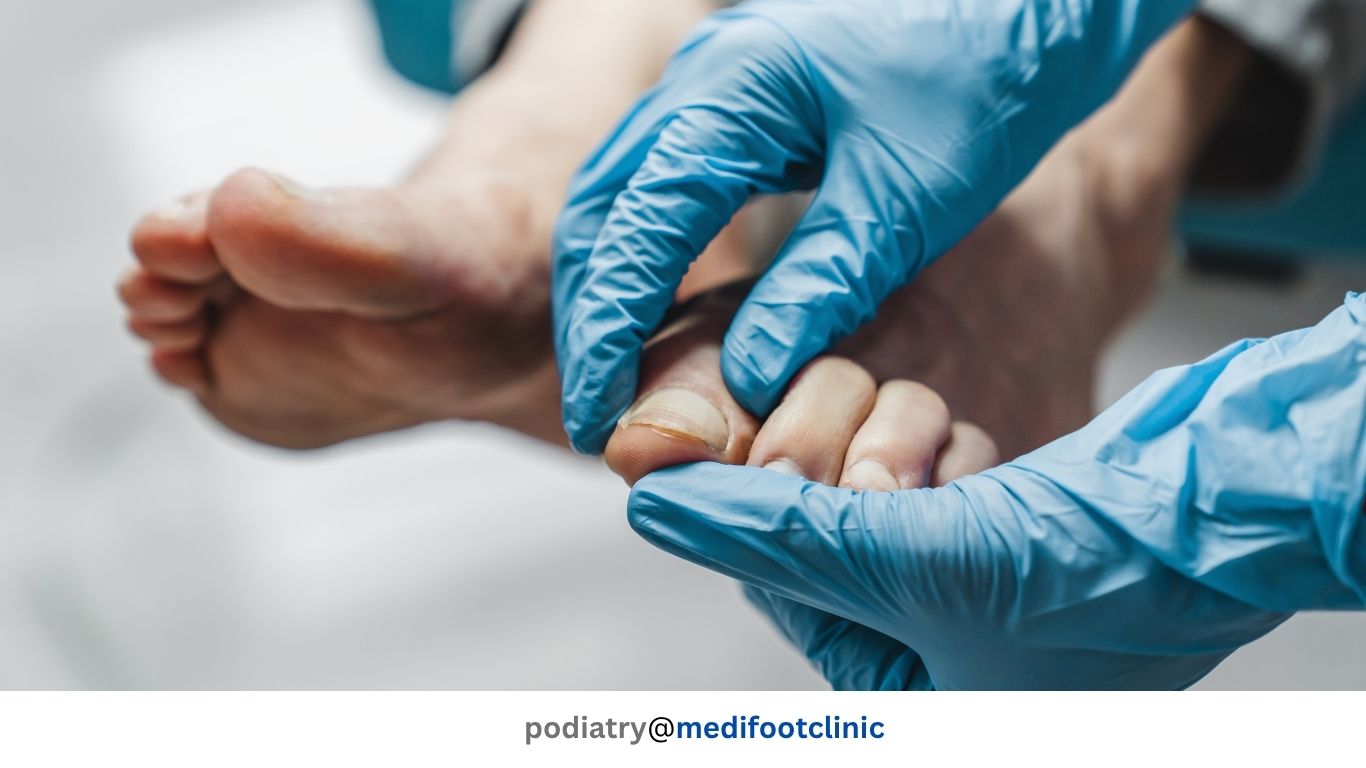Diabetes and Feet
Why diabetes affects feet
Diabetes can reduce blood flow (slower healing) and damage the nerves (reduced sensation). Together, these changes make it easier to miss small cuts or blisters and harder for them to heal—raising the risk of ulcers and infection. Early checks and good foot care help prevent complications.
Common foot problems in diabetes
- Dry, cracked skin and calluses from high pressure areas
- Thick, brittle, or fungal nails that may dig into skin
- Corns, blisters, and rubbing from ill-fitting footwear
- Reduced feeling (peripheral neuropathy), burning/tingling
- Slow-healing wounds and risk of ulcers or infection
What we check
- Nerve function (protective sensation using monofilament)
- Circulation (Doppler pulses, capillary refill, skin temperature)
- Skin, nails, pressure areas, and footwear fit
- Gait, biomechanics and areas at risk of ulceration
Self-care & prevention
- Check your feet daily for cuts, blisters, redness, or swelling
- Wash and dry carefully (especially between toes); moisturise dry skin
- Cut nails straight across; seek help for thick or curved nails
- Wear cushioned, well-fitted shoes and clean socks; avoid barefoot
- Report any new wound, discharge, fever, or sudden pain promptly
When to see a podiatrist urgently
- Any new wound, ulcer, discharge, or spreading redness
- Sudden swelling, warmth, or severe pain
- Black/blue skin changes, or a wound that isn’t improving
- Fever or feeling unwell with a foot problem
Team Care Plan (Medicare)
If your GP has placed you on a Team Care Plan for a chronic condition such as diabetes, your podiatry visits may be covered under Medicare. Speak with your GP, or see our Payment Options for details.
Where we are
We see patients across Melbourne’s north. View addresses and maps on our Locations page.


